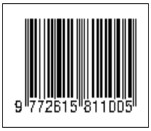MANAJEMEN PENANGGULANGAN KEMISKINAN: PENDEKATAN ELASTISITAS
Abstract
Keywords
Full Text:
PDFReferences
Bappeda Kabupaten Lombok Timur, 2017. Pengukuran Emisi Karbon di Wilayah Kawasan Hutan Kabupaten Lombok Timur. Laporan Penelitian. Kerjasama Bappeda Kabupaten Lombok Timur dengan Lembaga Pengembangan Pedesaan (LPP). Selong.
Barro, Robert J., 1989. Fertility Choice in a Model of Economic Growth. Econometrica 57:481-501.
Barro, RJ., 2000. Inequality and Growth in a Panel of Countries. Journal of Economic Growth: 5 (1):5-32.
BPS Lombok Timur, 2011. Perhitungan Indeks Pembangunan Manusia Kabupaten Lombok Timur 2011. Kerjasama BPS Lombok Timur dengan Bappeda Kabupaten Lombok Timur, Selong.
BPS Lombok Timur, 2017. Lombok Timur Dalam Angka 2017. Badan Pusat Statistik Lombok Timur, Selong.
Brannen Julia, 1993. Mixing Methods:Qualitative and Quantitative Research. Avebury, England.
Darlauf SN et al, 2001. The local Solow Growth Model. European Economic Review,456:928-940.
Fauzi, Akhmad, 2009. Sinergi antara Pembangunan Ekonomi dan Pengelolaan Sumber Daya Alam dan Lingkungan. Jurnal Ekonomi Lingkungan, Vol.13 No.2.
Kakwani N. dan Pernia E., 2000. What is Pro-Poor Growth?. Asian Development Review 18:1-16.
Kakwani N. et al, 2000. Growth, Inequality and Poverty: An Introduction. Asian Development Review 18 no.2:1-21.
Masoud N., 2014. A Contribution to the Theory of Economic Growth: Old and New. Journal of Economics and International Finance 345:453-474.
McCulloch and Baulch B., 2000. Tracking Pro-Poor Growth: New Ways to Spot the Biases and Benefits. ID21 Insight No.31, Sussex:Institute of Development Studies.
Muktasam et al. 2004. Developing Sustainable Microfinance Institution Involving Stakeholders:”The One Gate Model” A Learning Outcome from the ACIAR Project in Lombok Indonesia dalam Rosiady Husaenie Sayuti & John Klock (ed):Asian Rural
Sociology Presentations of International Conference, March 26-29 2014, Nagoya-Mataram.
Ram, R., 2006. Growth Elasticity of Poverty:Alternative Estimates and A Note of Caution. KYKLOS, 59-2006(4),10
Ram, R., 2011. Growth Elasticity of Poverty:Direct Estimates from Recent Data. Applied Economics, 2011(43),9.
Ravallion dan Chen, 1997. What Can Survey Data Tell Us about Recent Changes in Distribution and Poverty?. The World Bank Economic Review, 11(2):357-382.
SMERU, 2016. Peta Kemiskinan Provinsi Nusa Tenggara Barat. The SMERU Research Institute, Jakarta.
Suryahadi Asep et al, 2012. Economic Growth dand Poverty Reduction in Indonesia Before and After the Asian Financial Crisis. The SMERU Research Institute, Jakarta.
Susanti et al, 1995. Indikator-Indikator Makroekonomi. Lembaga Penerbit Fakultas Ekonomi Universitas Indonesia, Jakarta.
Swanson Donald J. et al, 2014. Sharpening the Focus of Force Field Analysis.Journal of Change Management, 14 (1):28-47.
UNDP, 2003. Human Development Report 2003. Oxford University Press, New York. World Bank, 2005. Pro Poor-Growth in the 1990s: Lesson and Insight from 14 Countries. The World Bank, Washington DC.
DOI: https://doi.org/10.35327/gara.v12i1.11
Refbacks
- There are currently no refbacks.
Copyright (c) 2018 GANEC SWARA

This work is licensed under a Creative Commons Attribution-ShareAlike 4.0 International License.










